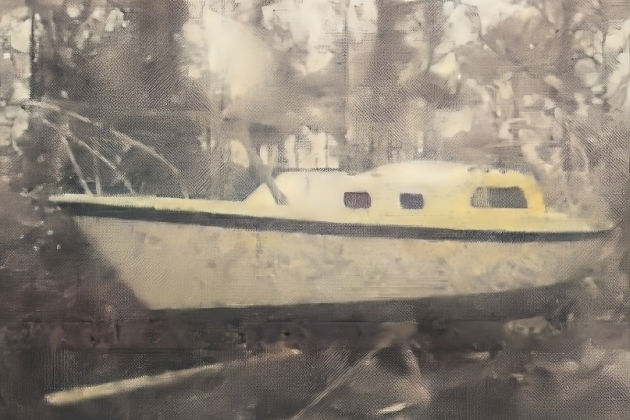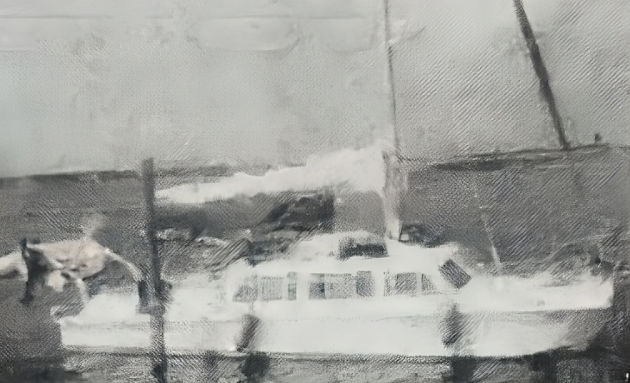Discover effective strategies to advertise your boat for sale. Learn how to write compelling ads for local publications and the internet, utilize free advertising, and enhance your listings with digital photography.
The purpose of advertising is to:
- inform potential buyers that your boat is for sale, and;
- generate enough interest among those buyers to get them to want to take the next step, which is to call and come over to see the boat.
Keep in mind that no matter how many details you place in the ad, and no matter how glowingly you describe your boat, it is very unlikely that you will be able to close the sale with the ad alone. The ad is simply the device you use to make the buyer want to come over and see your boat.
The amount you can spend on advertising is almost unlimited. You can buy classifieds in every newspaper and magazine published in your state, and even the surrounding states as well if you feel so inclined. You can supplement these classified ads with strategically placed display ads in the sports and business pages to direct readers to your classified ad. You can rent billboards and have splashy full-color ads placed along the major thoroughfares around your community. You can even buy radio and television commercials to sell your boat. Or you can do all of the above.
Once you let it be known that you are going to spend some money to advertise your boat, you may encounter a bevy of new friendly, frequently attractive advertising sales professionals, who will encourage you to place all sorts of ads, falling all over one another for the opportunity to explain to you why you must do so to sell your boat.
Since I’m not on commission, though, I’m going to tell you a different story.
Basically, advertising your boat for sale consists of placing a notice of the sale in a select number of conspicuous locations where buyers will have little trouble finding it. In fact, those buyers out there who are interested in buying a boat like yours are probably already looking for a boat. Chances are their friends are helping them as well, the spending of other people’s money being the perennially popular activity that it is. All you need to do then is place your ad where the buyer or one of his helpful friends will see it without having to expend a great deal of effort.
Don’t get confused between the kind of advertising you will be doing to sell your boat and the ad campaigns you may see that are designed for public education or to sway public opinion. In those cases, the ads are run over and over, appearing in all kinds of different media. They are beating a drum to pound their message into the public’s consciousness.
Selling your boat, on the other hand, is a very different sort of advertising. You can’t really push your boat onto the buyers. Therefore it is a wasteful, expensive mistake to place excessive, redundant advertisements in the same geographic area. There are a certain number of boat buyers in any given locality who may be interested in a boat like yours at any given time, and chances are they already have a pretty good idea where to look in order to find boats for sale. Again, your goal in advertising is to place an interesting notice about your boat where these buyers and their helpful friends are likely to find it.
Local Publications
In every community there is a dominant newspaper that enjoys the lion’s share of the market. It is the first place where people look when they want to buy something, and the best place to list something for sale. Placing a classified ad in this publication does a good job of reaching those buyers looking for a boat like yours. Unfortunately, the publishers and business managers of such newspapers, having considerable business savvy, know this and set their advertising rates accordingly, charging both for the amount of space the ad occupies and the number of people who read the newspaper each day.
They will also usually charge for each and every day the ad runs, rather than offering flat rates and package deals. In short, the ad rates will tend to be fairly expensive and there will be few if any options to accompany your ad with a picture at How to Choose the Best Selling Price for Your Boata reasonable price. This may motivate you to seek alternatives.
Boat Advertising Magazines
In boating communities you will be able to find one or more boat advertising magazines distributed for free at newsstands near shopping centers, at marine businesses and sometimes at other busy retailers like Wal Mart. These magazines offer better advertising rates than ordinary newspapers and also generally offer the option to publish a picture of your boat with your ad at little or no additional cost. Frequently they offer package deals and discounts.
Some of these magazines are better than others. The ones that go to the trouble to organize the ads by boat type, size and/or price are easier for the buyers to search, and thus enjoy a larger audience. A few of these magazine publishers will also place your ad on a local Internet Web site, which provides even more exposure for your boat.
Writing an Ad for the Local Press
Professional ad writers know that brevity is a virtue. Therefore, when composing your ad you need to inform the buyer what you have for sale, how much you are asking for it, the fact that it is the best of its kind and how you can be contacted, all in the fewest number of words possible. If you feel the need to add more, fine. But when you do so, always ask yourself if the added description will make the reader more likely to call.
Whatever you do, don’t include a list of recent fix-ups in your ad, since that will make your boat sound like it has been sitting around falling apart for the past few years, and you just patched up some of the worst problems in order to sell it. Along these same lines, don’t criticize your boat, since this is,the time to put your best % foot forward, as they say. Finally, don’t tell the reader how easy or cheap it will be to fix this or that little problem since the reader may be inspired to ask himself why, if it’s so cheap and easy, you didn’t take care of it yourself. For that matter, why didn’t you?
Keep in mind that it’s okay to be a little coy with your ads. Indeed, there are times when too much information actually hurts you because it leaves no questions unanswered. The intended goal of an ad is to get the buyer to pick up the telephone and give you a call. Once you have a buyer on the telephone, you can then use the information in the next article (chapter6)*** to “get em across the curb” as they say in the car business, since:
“They aren’t going to buy unless you get them on the lot”. Which happens to be the truth.
Of course, don’t take this brevity business so far that the ad becomes incomprehensible. For example, don’t get carried away with the abbreviations. “88 Blnr 24 io tlr ex shp inc fsh fdr br549 af 6”. Hmmm…
Typical Ways of Writing Ads
Ad 1 19′ Angler, C&C, 150 HP Johnson, tandem trailer, needs work, been sitting for 4 yrs, $1500.
Ad 2 19′ Angler Although it may have been sitting four years, this is not the place to mention it. It is sufficient to say that the boat needs work. Use the remaining space in the ad to tell the buyer about the benefits of owning this boat, and what the boat does well.
Free Advertising
For those selling very low-priced boats, or those who are constitutionally opposed to spending money, there are also some creative ways of advertising your boat for free.
For example, if your boat is located in an area with some exposure to traffic, either automobile or boating, you can inform people of the availability of your boat by simply placing a “For Sale” sign on, say, the windshield.
You can also try placing an ad for your boat on a community bulletin board at your local marine store, if it maintains such a service. You may also find bulletin boards at the local library, Laundromats, churches and some hardware stores, banks and credit unions. If you decide to go with this latter option, print up and cut out something that buyers can take with them that has the boat description and your telephone number on it. That way they don’t have to find a pen and paper to make notes in order to contact you. Perhaps you can creatively partition a 3×5 index card with tear-off tabs for the shoppers.
Internet
Another terrific way to advertise is to use the Internet. In fact, this is my favorite way to advertise a boat. And judging from the number of boats listed on some of the following Internet sites, it has become a favorite way to shop for a number of other boaters as well.
Buyers like to use their computers to shop for boats because it is so easy and convenient. At any time of the day or night, without getting dressed or driving anywhere, they can conduct a detailed boat search, while relaxing in the comfort of their own home. As was the case when you were doing your market research, a buyer can search for boats by:
- manufacturer,
- year,
- model,
- location,
- engine type,
- rig,
- length or price range.
They can also search under a number of different key words like “autopilot” or “trailer”, or any combination of the above! Best of all, these searches take only seconds, and you can print or save the resulting boat list from the search. No print publication can offer that level of flexibility and convenience to a buyer searching for a boat.
Writing an Internet Ad
Not surprisingly there are some special rules for writing an Internet ad. First of all, you have to be more forthcoming in terms of the details you provide since you are covering a much larger geographical area and therefore attracting potential buyers from much farther away. I’ve had buyers drive over a thousand miles to come see a boat I was selling, and it’s not at all unusual to have a buyer drive in from a couple of hours away.
Because of this, it is important that your ad not only accurately describes your boat, but also gives notice to the buyer of any major issues that might cause him to not want to buy it. If you entice a boat shopper to spend several hours and a significant amount of money driving to see your boat only to discover that you misled him about the boat’s condition or features, it is quite possible he may become irate, or worse.

For this reason, it is a very good idea to include pictures in Internet ads, since the camera is perfectly objective, and as long as you do not modify the photographs, the pictures of your boat are honest representations, beyond dispute.
I’m not suggesting that you nit-pick your own boat to death. Every boat has flaws, even straight from the factory, and they only get more numerous with age. Still, if there are any major problems with the boat that buyers are going to recognize the moment they see it, don’t keep them in the dark (although, of course, when you mention the problem in your ad, take the opportunity to do so in the most positive terms!).
Due in part to the nature of the Internet marketplace, Internet ads afford you more room to describe the boat, and you should take advantage of this fact. Unlike newspaper ads, there are no column-inch charges here. Usually, you are given a generous paragraph (3 000 characters or so) in which to insert your flowery prose, in addition to a structured table of facts and features. Think about the type of boater who may be interested in your boat, and use the space in the ad to speak to him directly. Tell this buyer what exactly the boat will do for him, how he can take it out and enjoy it, and why your boat is so much better than any of the other boats offered for sale.
Read also: Top 7 Secrets to Successfully Sell Your Used Boat
Another caveat regarding Internet advertising is that your boat must be ready to hit the road or the waterways for a long trip home the day you advertise it. Again, if you are selling a trailer with the boat, be sure that it is not only ready to go 300 trouble-free miles, but that it looks like it is ready to go 300 trouble-free miles.
Digital Photography Primer
To place a photograph of your boat on the Internet, you will need to obtain a digital photograph of your boat. A digital photograph is a photographic image that has been reduced to electronically symbolic ones and zeros. The digital photograph is then stored as a file on a computer disk that can be sent over the Internet, from one computer to another. It can also be printed in full color using an inexpensive color printer attached to your computer.
One of the many advantages of digital photographs is that they can be modified using a program called an Image Editor or Photo Editor. It is possible to quickly and fairly easily edit digital photographs to remove unwanted image content, add image content, expand or shrink the photo, or enhance the brightness or contrast of the photo in order to change the quality of the image or add artistic effects.
Note that photographs taken with a standard camera and film can also be transformed into digital photographs.
Film developing services now offer to digitize and store your photos on a diskette and send the disk back to you with your pictures, for a modest additional charge. Some film processors will even store your digitized photos on an Internet server in such a way that you, and only you, can download them onto your computer. You can also convert your conventional photographs into digital ones using your computer and a device called a scanner.

Basically, all you do is place the conventional photograph on the scanner, which scans the image and converts it into those ones and zeros. A new file containing the digital copy of the photograph is then stored on your computer disk for you.
Digital Cameras
Of course, the most direct way to obtain digital photographs of your boat is to go out and buy a digital camera. They look like slightly smaller versions of regular cameras and operate in pretty much the same way, i. e. you hold them up to your eye and while looking through the viewfinder to frame the picture press the shutter button. After you take the picture, the camera stores the photograph inside on a digital memory disk or “card”. Each camera has a limited capacity for photograph storage, so sooner or later you have to connect the camera to your computer and move the digital photographs from the camera to the computer’s considerably larger disk drive for permanent storage. The camera is thus emptied and ready to go take more photographs.
You never have to load film or any other photographic consumable into the camera, although you do need to replace the camera batteries periodically. The newer digital cameras use a little flat video screen on the back of the camera in addition to a viewfinder. That way you can visualize your photos by looking at the little screen on the back of the camera instead of peeking through a viewfinder.
Even better, you can immediately view your photographs on the little video screen, which is a nice feature to have since it allows you to spot problems with the photograph immediately, affording you the opportunity to retake bad photos while everyone and everything is still posed for the picture. Things like reflected glare, poor contrast, or a tilted camera platform are more apparent when viewed on the little flat video screen.
Of course, digital cameras can vary dramatically in terms of:
- quality,
- special features,
- and of course price.
The primary quality issue is the maximum resolution of a single picture the camera can take. This in turn depends on the number of dots or pixels (picture elements) each picture contains. Specifically, the more dots in the picture, the finer the image will appear, with the dots being sold in units called megapixels. Keep in mind, though, that while more dots would seem to be better, this is not always the case.

For example, the Internet has intrinsic limitations in transmission speed, which effectively limit the resolution of the digital photographs transmitted. A very fine quality digital photograph requires a relatively huge file to store all of the dots, which can take a long time to send over the Internet. The one or two million Internet boat shoppers simply won’t wait forever for the photographs of your boat to download and appear on their screens, no matter how pretty they are.
High-resolution photos also take up a lot more storage space at the Internet advertising site, yet another reason why most digital photographs viewed over the Internet tend to be fairly low resolution; to keep the size of all those stored images manageably small. A budget digital camera is just as capable of producing low resolution pictures as high-end ones.
In addition to their different picture qualities, digital cameras also have varying amounts of picture memory that is used to store your photographs in the camera until you get around to downloading them onto your home computer. The most basic, low-end-close-out-special cameras may be sold with as little as 8 MB of picture storage, while 16 MB is considered the entry level minimum (of course, you wouldn’t want to be caught dead without at least 128 MB of storage, in the form of removable flash memory cards!).
What does all this mean in terms of the number of pictures you can take at any given time? Well, that depends on the resolution of the photographs you take, and a few other variables. As a rule of thumb, though, 16 MB will store about 25 Internet quality photographs, 16 moderate-quality photographs and eight good-quality photographs.
All but the most basic digital cameras come now with a flat LCD image viewing display, in addition to the customary viewfinder. Again, you can use the display to preview your photograph after you take it, and decide whether to store the photograph in the camera’s memory, or discard it and try again.
If you are going to get a serious digital camera, you should only consider those with an optical zoom. The low-cost digital zoom is ubiquitous, but it yields disappointing results since it degrades the picture quality in direct proportion to the amount of zooming it does; experienced digital photographers know this is not an acceptable option. Finer cameras will also include more sophisticated optical sensors both to provide automatic optimal flash exposure control and to control the image exposure to correct for less than optimal lighting conditions.
So what’s the bottom line? We’re talking the low $100s for a budget camera, and over $200 if you want to appear in public with the camera without humiliating your teenager; a lot more if you want to get really serious.
Photograph the boat from a number of different angles, both in the morning and evening in case one time of day provides better light. Then have the pictures developed and specify that you want the digitized images put on disk for you. Review the photos when they come back in about a week, and if they don’t look good … well, go get a disposable camera for about $6 and try again.
eBay
Basically, eBay is an Internet site on which anyone can create an auction to sell his or her stuff. It is a very busy place, and there are merchandise categories and buyers and sellers for just about everything that it is legal to buy and sell. eBay started by selling small stuff, sort of like an Internet-based garage sale. But of late, more and more big-ticket items are being sold including real estate, automobiles and, that’s right, boats. Current eBay volume is estimated to exceed 600 million auctions per year, for merchandise valued at over $12 billion!
The eBay process works as follows. First, the seller creates an auction for his merchandise, usually one item per auction (although occasionally a group of identical items will be sold at the same auction). The auction then opens for bids for a fixed period of time, usually three, five or seven days, with the seller specifying how long the auction will run, the opening price, and the cost of shipping and payment terms. eBay sellers can accept cashier’s checks, personal checks, money orders, electronic funds transfers, credit card payments or anything else they can dream up, as long as it is legal.

Buyers peruse the eBay site looking for things that interest them, and when they find something they like, they place a bid. Bids must exceed the last bid placed or meet the starting bid specified by the seller if there are no prior bids. The process continues until the time limit expires for the auction, at which point the bidder with the highest posted bid wins. The buyer then sends payment to the seller, and the seller ships the goods to the buyer.
Sound interesting? If so, you can refer to Chapter 9***, to learn everything you need to know to register with eBay and sell your boat at auction.

